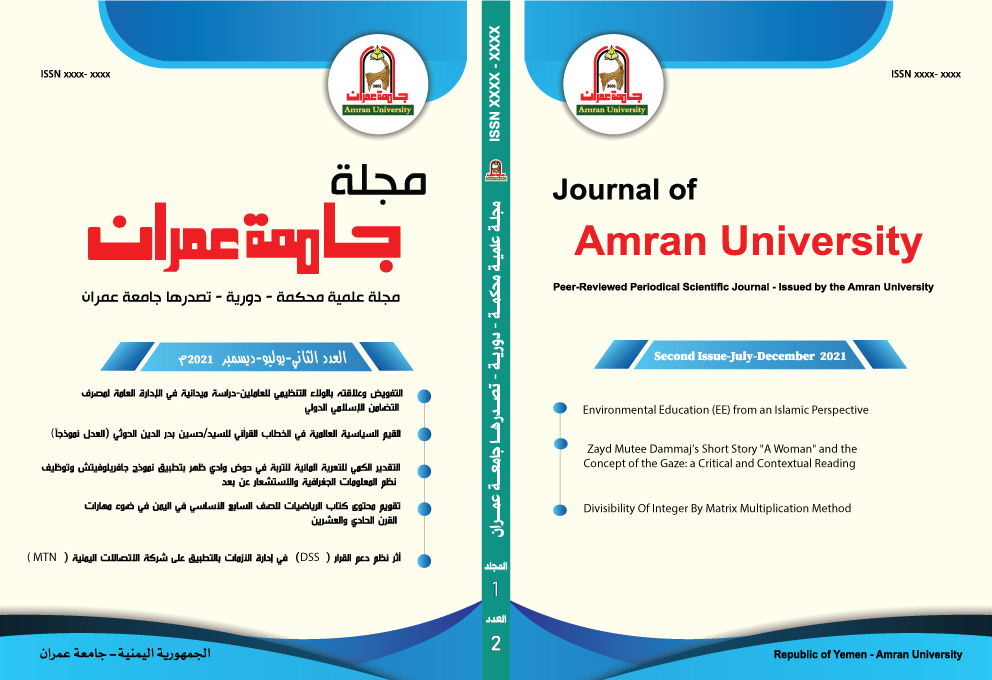Quantification of soil water erosion in the Zahr Valley Basin by applying the Gavrilovic model and employing geographic information systems and remote sensing
DOI:
https://doi.org/10.59145/jaust.v1i2.26Keywords:
وادي ظهر, التقدير الكميAbstract
The main objective of this research is to estimate the risk of soil erosion in the Wadi Zahr basin by applying the Gavrilovic model using geographic information systems and remote sensing. The basin borders the capital, Sana'a, from the western and has an area of 355.7 km2 and consists of six sub-basins, with basin heights are ranged between 2220 - 3666 m above sea level and average gradient of 11.6%, most of the basin is covered by triple and quadruple volcanic rocks and few sand rocks and modern sediments, with an average rainfall of 223 mm and an average temperature is 31.5°C per a year. Terrain, vegetation and temperature data were extracted from LANDSAT_8 imageries, and the digital elevation model (GDEM) and treat them as inputs for estimating the erosion coefficient (Z). The result values are ranged between 0.02 and 5.11, with an average of 1.0 indicating the basin’s exposure to severe erosion, and it is also for annual erosion rates (W) of the average in the basin 1408 m3 / km2 / year. The rates in the southern basins increased to the level of erosion. This resulted in the exposure of rocks on steep slopes and the occurrence of landslides. It became clear that the most important factors affecting the annual erosion rates were slopes and climatic factors, followed by rock quality and vegetation.
Downloads
Published
How to Cite
Issue
Section
License
Copyright (c) 2022 JOURNAL OF AMRAN UNIVERSITY

This work is licensed under a Creative Commons Attribution-NonCommercial-NoDerivatives 4.0 International License.

